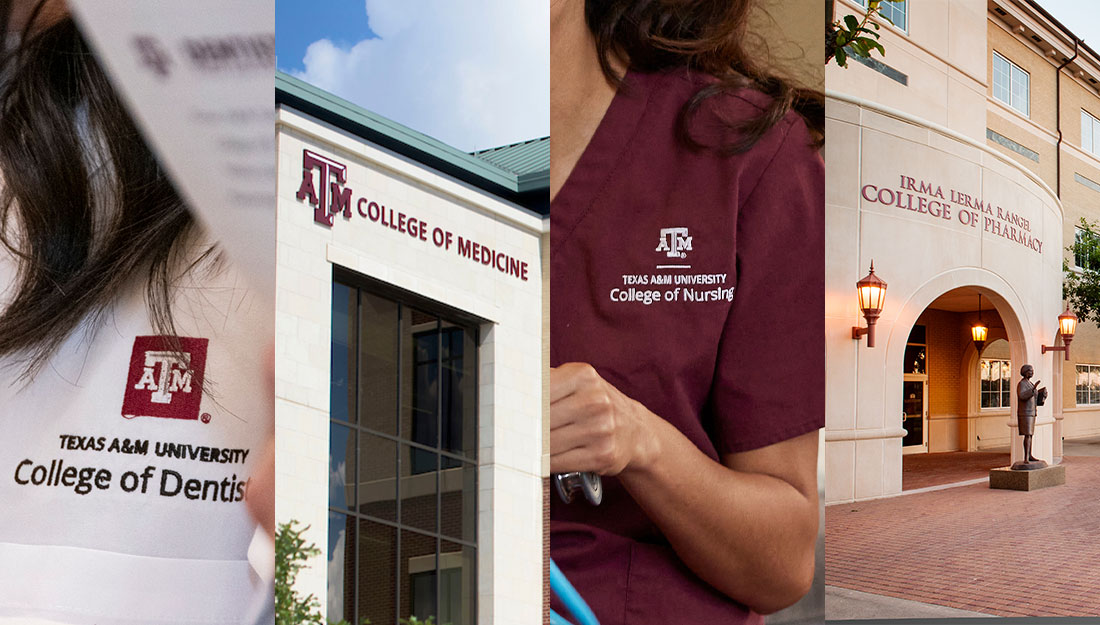Health Science Center to Conduct All-Hazard Disaster Education for Medical Students
All-Hazard Disaster Education
For more information contact: John Holder (979) 458-0669
The Texas A&M University System Health Science Center College of Medicine is preparing to incorporate into its curriculum education for medical students on weapons of mass destruction and bioterrorism. This initiative—which is one of the most comprehensive and innovative initiatives of this type in the nation—will kick off December 16-19, in College Station. Morning sessions will be held at the Reynolds Medical Building at the College of Medicine; afternoon sessions will be at the College Station Hilton.
The sessions, which include hands-on simulation exercises for the medical students, are a result of the College of Medicine Curriculum Committee’s decision to approve a 20-hour block of education in these areas. The American Association of Medical Colleges (AAMC) is encouraging all medical schools to incorporate disaster education into medical student education. The committee asked the U.S. Air Force to assist in the training and to include subjects recommended for coverage by the AAMC.
“The training we will offer our students is exciting because we are combining the research and teaching expertise of our faculty in the areas of biological and chemical agents with the expertise of the military in disaster readiness and disaster response,” said Vernon L. Tesh, Ph.D., chairman of the College of Medicine Curriculum Committee. “We will provide our students scientific information on weapons of mass destruction and the training needed to respond to disasters in a real-world, real-time fashion.”
“Disasters can overwhelm a regional health care system, taxing providers to the limits of their capabilities,” said Christopher C. Colenda, M.D., M.P.H., dean of the College of Medicine. “We must not only address the acute health care needs of all-hazard disasters, but we must also deal with the long-term mental health and social consequences of these traumatic events. The sessions will prepare our students to treat all of these aspects.”
To enrich the course experience and involve—in addition to students—as many medical and public health education professionals as possible, the health science center has invited representatives of other Texas medical and public health schools, as well as government agencies from across the nation, to attend the sessions. This portion of the program is designed as a “train the trainer” module to prepare professionals to conduct their own disaster education programs.
A&M Health Science Center President Nancy W. Dickey, M.D., notes, “This approach will ensure that any participant can go out and deliver their own course. Participants will leave with a CD-ROM of the entire presentation set. We think this is an unparalleled opportunity to ‘jump start’ these educational efforts in our medical community.”
The initiative is being organized by P.K. Carlton, M.D., director of homeland security for the health science center. “This course, which has been taught by the Air Force in 34 countries around the world in the last several years, enables us to begin the education of our future physicians in topics not formerly covered. The opportunity to have a ‘train the trainer’ portion will open a dialogue between schools that should help all of us adapt to this new series of challenges.” Carlton notes.
In its report, “Training Future Physicians About Weapons of Mass Destruction,” the AAMC notes that polls have shown that citizens prefer to turn to their doctors for guidance on how to protect themselves and their families in public health emergencies, such as a bioterrorism attack. To meet the expectations of their patients and communities, the report states, physicians must not only become familiar with rare clinical syndromes and exotic offending agents, but also must develop an understanding of their roles in disaster preparedness and response.
The program at the College of Medicine forms “Block I’”of a disaster education curriculum and is a modified version of a course developed by the U.S. Air Force called “Leadership Course for Disaster Response.” The college plans to include additional blocks for third- and fourth-year medical students.
Some of the areas to be addressed in the December 16-19 sessions include:
- Introduction to Disaster Response Systems
- Trauma and Disaster Epidemiology
- Injury Prevention Principles
- Displaced Persons/Refugee Exercise
- Communicable Disease Epidemics
- Triage Principles for Mass Trauma and Disaster Response
- Public Health Aspects of Biological, Chemical and Nuclear Weapons
- Blast Injuries in Disaster Response Scenarios
- Psychosocial Aspects of Disaster and Trauma Care
The Texas A&M University System Health Science Center provides the state with health education, outreach and research. Its five components, located in communities throughout Texas, are Baylor College of Dentistry, the College of Medicine, the Graduate School of Biomedical Sciences, the Institute of Biosciences and Technology and the School of Rural Public Health.
Media contact: media@tamu.edu


